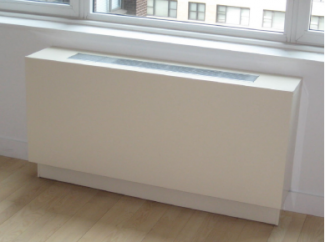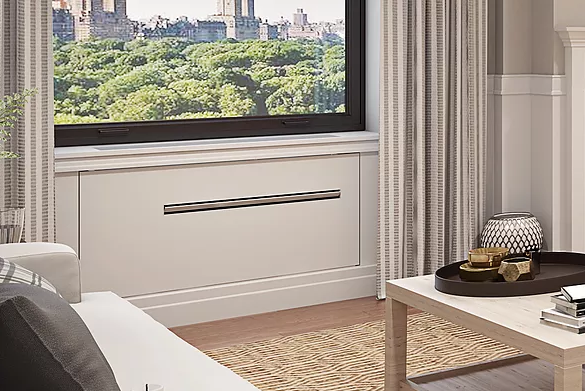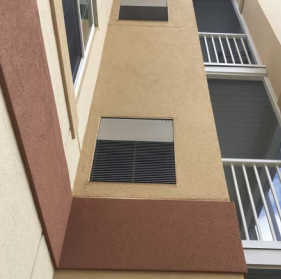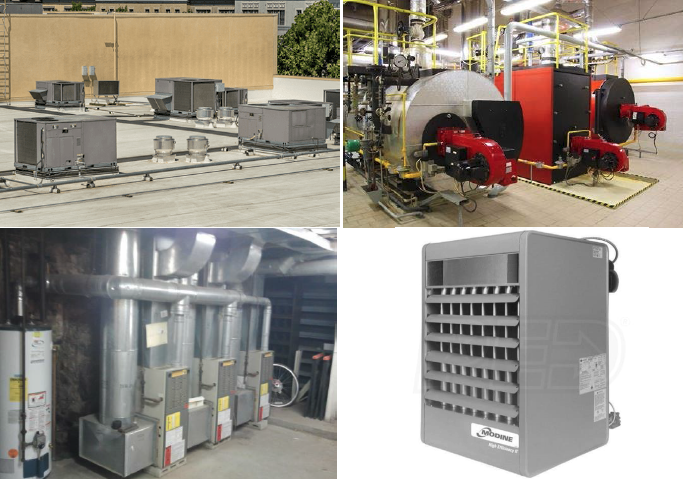

By Ben Hiller | Fri, December 17, 21
NEEP is proud to announce the addition of packaged terminal heat pumps (PTHPs) and single package vertical heat pumps (SPVHPs) to the Cold Climate Air Source Heat Pump Product List. These small form-factor products have recently become available with variable speed compressors, allowing operation at 5°F and below without supplementary electric heat.
As architects, engineers, and energy efficiency program administrators look for options to replace aging packaged terminal air conditioners (PTACs) common in high-rise multi-family homes, particularly in cities like New York, the NEEP list will identify products best suited to electrify heating in cold climates. The addition of PTHPs and SPVHPs is a big step forward towards NEEP’s ASHP initiative market transformation goal of 40 percent of Northeast homes using high performance ASHPs for heating by 2030. It is also a big step towards creating clean heat and healthy, livable environments for all.
Specifications
One specified requirement of these units is a coefficient of performance (COP) of at least 1.5 at 5°F, which is 150 percent efficient compared to burning fossil fuels like natural gas, oil, and propane, which are always less than 100 percent efficient. Adding solar panels and purchasing clean electricity can offset the need for electricity generated by fossil fuels, and work towards a Zero Energy Building.
One challenge with retrofitting PTACs in existing buildings is the 16” x 42” hole in the wall for a standard size cabinet. Replacement packaged terminal heat pumps (PTHPs) can slide into the existing cabinet, as commonly seen under a window.
Other models are available in an even smaller form factor, which are technically rated as single package vertical heat pumps (SPVHPs), and can be adapted to the standard 16” x 42” hole with a smaller air louver on the exterior of the building. The smaller opening in the building envelope results in less heat and air leakage than the standard size opening.
For the ultimate in aesthetics, the unit can be concealed in a cabinet with custom supply and return air louvers.
SPVHPs are typically placed in a closet, with ducted supply air, and louvers on the outside of the building. You may have seen these AC units before and never thought about the opportunity to replace them with cold climate heat pumps.
|
Source: Ice-Air 2021 |
|
What’s Next?
NEEP is expanding the scope of its Heating Electrification Market Transformation initiative deeper into the commercial market with the upcoming cold climate VRF (variable refrigerant flow) specification, and exploring additional heat pump categories. A recent ACEEE Report, Electrifying Space Heating in Existing Commercial Buildings: Opportunities and Challenges, examines the most common types of commercial heating systems: packaged rooftop units, boilers, furnaces, and space heaters.
Packaged units conveniently include the entire refrigeration circuit in one unit, as compared to split systems that use indoor and outdoor units. A rooftop unit (RTU) is the most common packaged unit, with a built-in gas furnace as the most common source of heat in cold climates. Heat pump RTUs are becoming increasingly available with performance necessary for cold climates. Gas-fired RTUs can also be retrofit with a new coil connected to a VRF outdoor unit for heating and cooling.
Boilers are the most difficult to replace directly with heat pumps because they create very hot water, typically 180°F, which is then piped to radiators or hot water coils in air handlers. Air-to-water heat pumps typically max out at about 140°F, but new units are approaching 180°F, even in cold climates.
Furnaces and space heaters are good candidates to replace with air-to-air heat pumps, such as the mini splits and multi splits on the NEEP list today, the new PTHP and SPVHP units, and upcoming VRF units.
Heat pumps can either be air-source, absorbing and releasing heat to the air outside, or water-source, absorbing and releasing the heat to water. The water can be cooled by a cooling tower and heated by a boiler, or for the highest energy efficiency, sent through a loop of pipe underground. Water-source heat pumps that use a ground loop are called ground-source. Ground-source heat pumps can avoid overloading the electric grid on the coldest winter days, because they absorb heat from deep underground rather than from the air outside.
The market needs ways of differentiating these solutions that perform well in cold climates. NEEP intends to develop new specifications for rooftops in 2022, as well as decide which other categories should follow. We will continue to explore opportunities for heat pumps to reduce building energy consumption and carbon emissions. Stay tuned for more!






